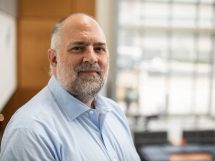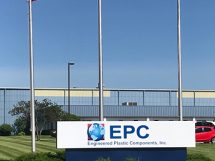LOUISVILLE, Ky. – The need for surgery in outer space may be far off in the future, but a team of University of Louisville researchers along with by members from Carnegie Mellon University are at work now developing the technology that is expected to make “astro surgery” possible. The technology also holds promise for a variety of uses on the ground in settings where creating sterile surgical environments would be difficult.
George Pantalos, Ph.D., is professor of surgery and bioengineering attached to the Cardiovascular Innovation Institute at UofL. Along with Carnegie Mellon bioengineering researchers James Antaki, James Burgess and Jennifer Hayden, he is developing a watertight surgery system to isolate surgical incisions and control bleeding.
“In the weightless atmosphere of deep space, the absence of gravity will make it nearly impossible to control the escape of blood and bodily fluids during surgery,” Pantalos said. “This lack of control would both compromise the health of the patient as well as contaminate the spacecraft cabin.”
The system, known as the Aqueous Immersion Surgical System (AISS) will be tested in zero-gravity conditions for the first time Oct. 2-5 aboard NASA’s zero-gravity aircraft at the Johnson Space Center Reduced Gravity Program. Flights will be conducted out of Ellington Field, located southeast of Houston.
The AISS – a structure resembling a transparent dome the size of half a grapefruit – is designed to be mounted over the patient’s surgical site. Openings that are both air- and watertight enable the surgical staff to conduct surgery and control bleeding and loss of bodily fluids through a pressurized aqueous environment created within the surgical field. Water is pumped through the AISS to safely remove blood and other body fluids; without the controlled environment created by the AISS, these fluids would be expressed into the spacecraft cabin.
Ground applications of the AISS could include its use in regions where it is difficult or impossible to create a sterile surgical environment, such as war zones or Third World countries or challenging procedures such as brain or spinal cord surgery.
“The AISS both controls bleeding and fluid loss out of the patient and prevents air and other contaminants from getting into the surgical site,” Pantalos said. “This makes it ideal for both deep space surgery and any number of surgical uses on the ground.” Annually, 32.7 million patients in the United States undergo major surgical procedures.
In Houston, the team will test the AISS in four flights. The first two flights will test the mechanics of the device while the last two will test the device in a simulated surgical procedure using a pig heart. “Testing the AISS in space-like conditions will show us how it will work both in deep space and on the ground,” Pantalos said. “If it functions as it should under zero-gravity conditions, we will be confident it will function as designed here on Earth.”
Pantalos is a veteran of zero-gravity spaceflights
This will be Pantalos’s 28th trip to conduct research aboard NASA’s zero-gravity aircraft and he also has flown experiments on the Space Shuttle. It was his connection to NASA that brought him to the AISS project.
NASA’s C-9 aircraft is used primarily to train astronauts and other pilots for weightless conditions. It also is used for a select group of research projects, such as the AISS, each year. To create the weightlessness effect, the zero-gravity ascends and descends in a series of parabolic arcs. On the ascent, passengers experience strong G-forces; it is at its peak and early descent that weightlessness occurs.
“You are floating in the air but it is not like the same feeling you experience when you float in water,” Pantalos said. “Things shift around inside your body. You feel as though you are upside down even though visually you can see that you are right side up.
“All in all, however, working in weightlessness is fun.”
Pantalos came to UofL in 2000 and joined the Cardiovascular Innovation Institute (CII) when it opened in 2007. A joint initiative between UofL and Jewish Hospital HealthCare Services, the CII focuses on the discovery, development and implementation of innovative treatments for cardiovascular disease. The CII’s main goal is to be a world-class multi-disciplinary research enterprise, encompassing basic, translational, clinical and population research in cardiovascular disease. For more information, visit the CII website: cv2i.org.




















Add Comment